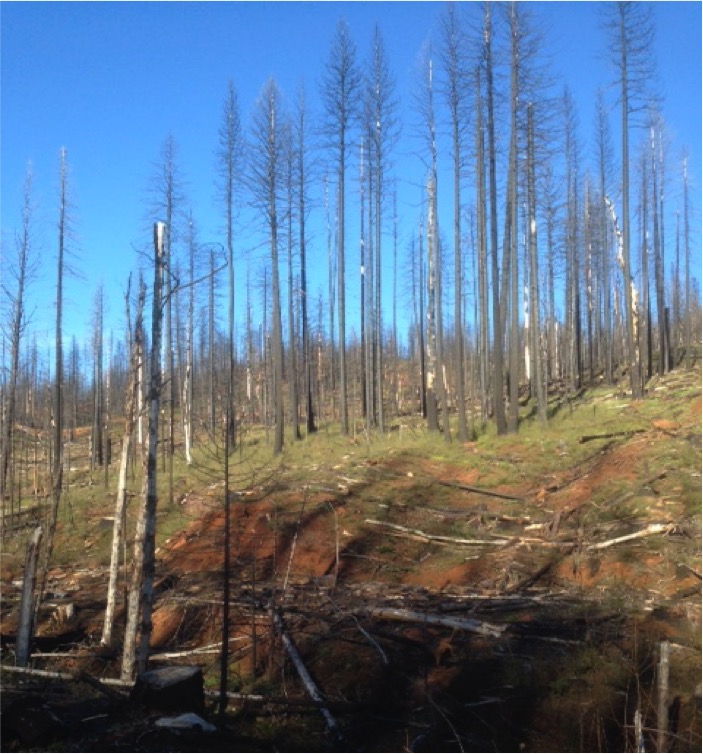
Most of the agency’s efforts to re-grow conifer seedlings across the majority of planting sites in the Rim Fire area will be decided by the Rim Reforestation plan. After two years of delays while salvage logging was completed, the Reforestation Plan is now close to final approval. But unlike the small amount of tree planting that was done earlier this year without herbicides, the massive Rim Reforestation Plan allows widespread, intensive herbicide use.
CSERC is one of a broad diversity of interests that strongly supports getting pine, fir, and cedar seedlings planted in high severity burn areas where few conifers survived. Almost everyone wants a young forest growing again. Some support herbicide treatments, while others oppose any chemical use. And even those opposed to herbicides (such as CSERC) recognize that far fewer planted conifer seedlings will survive if herbicides aren’t applied to kill back competing vegetation. Accordingly, CSERC has worked consistently to advocate for a compromise plan with a significant amount of reforestation, using the least amount of herbicides.



